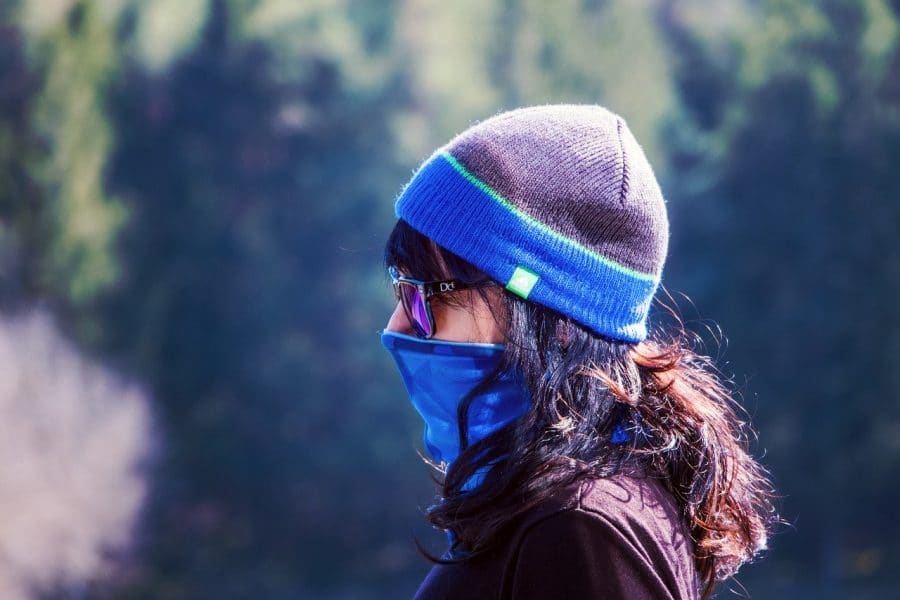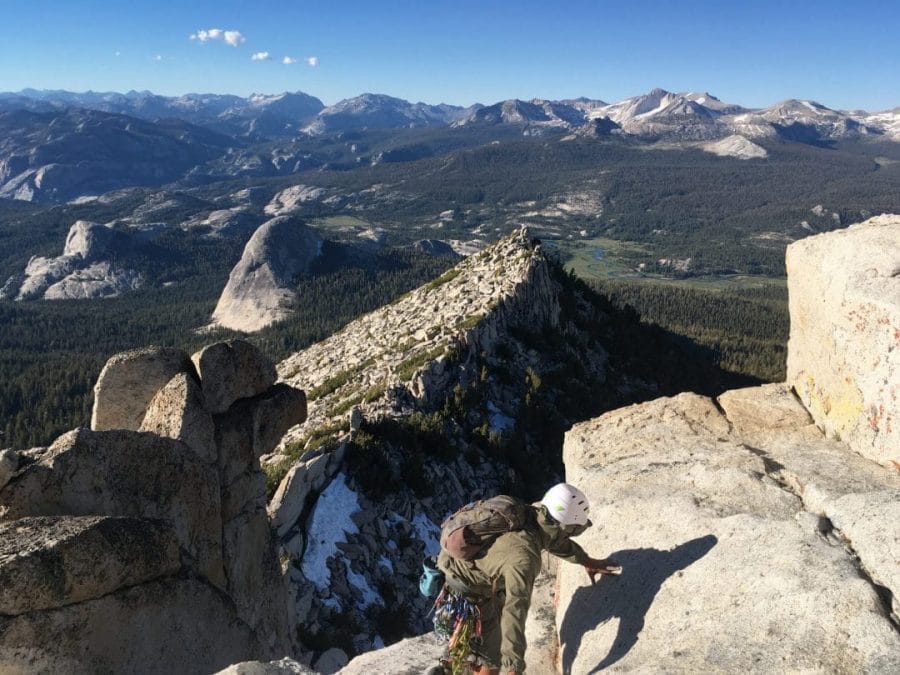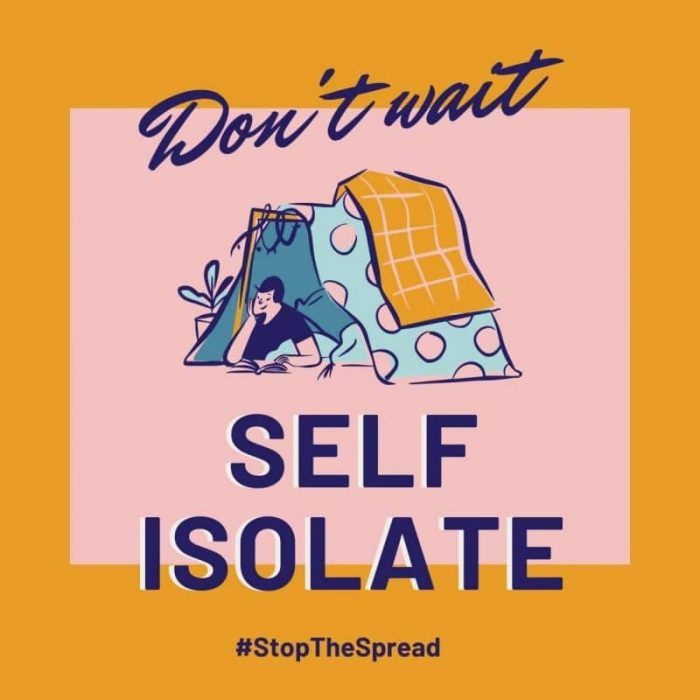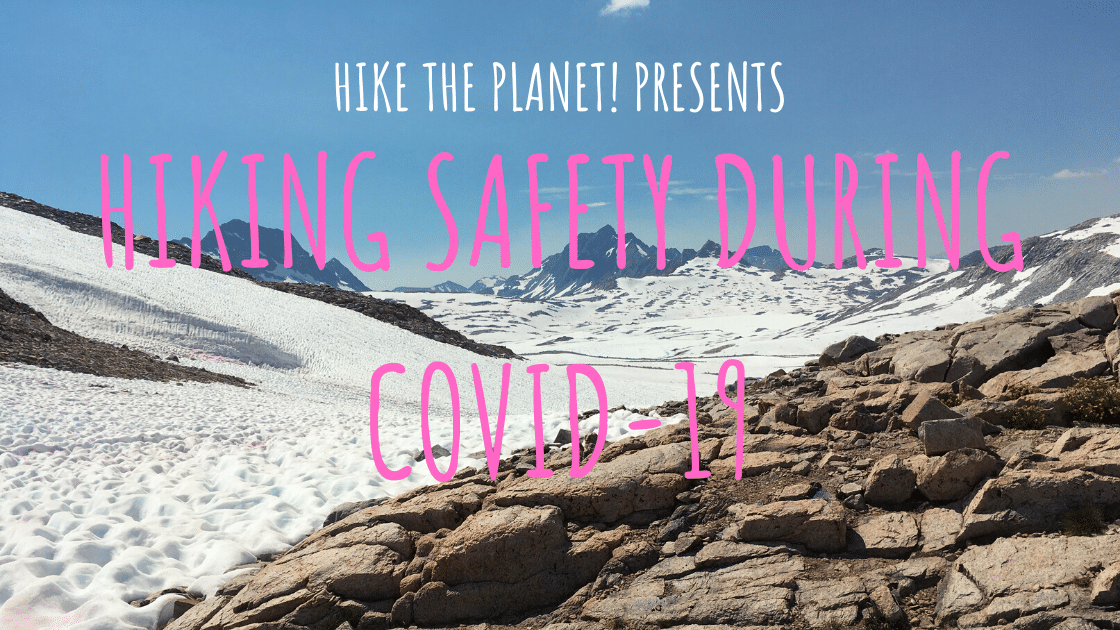Social Distancing and COVID-19 Safety in the Outdoors

It’s 2020. New decade, new Pandemic, as the saying goes. COVID-19, the new craze sweeping the globe, has forced more people indoors than an Arkansas hail storm. Billions of people are confined to their homes, waiting out the invisible virus ravaging it’s way through ICUs. We’re living in a historic moment, which is what I try to tell myself when I’m busy “flattening the curve”.
So the bad news is…well, there’s a whole lot of bad news. But the good news is that people can still escape to the outdoors! When Cabin Fever takes hold, you can head to your local trails, so long as you do so safely, while responsibly observing social distancing guidelines. Hiking has been my one saving grace during this whole debacle. It’s allowed me to think and stretch my legs, and it generally helps to foster a positive mindset.
So, safely quarantined in a secure location somewhere in the American west, I’ll give you a few tips on how you can get some exercise, fresh air, and sunshine on your local trails, all while keeping the COVID at bay.
COVID-19: Signs, Symptoms and Safety
Before I get into it, though, let me go through some important public service details. You’ve heard it from every news outlet, government agency, and two bit hiking blog, but I’m gonna post it here, for everyone’s sake. As per the CDC website, here are the signs and symptoms of COVID-19.
For Mild Cases:
- Fever
- Cough
- Shortness of Breathe
For Severe Cases (go to a hospital right now)
- Trouble Breathing
- Persistent Pain or Pressure in Chest
- Confusion or inability to arouse
- Bluish Lips or Face
This is the same information repeated verbatim for nearly two months now. I’m not a doctor, epidemiologist, or even a nurse. I’m just a lowly EMT, so take my medical expertise here with a grain of salt. Don’t listen to me, listen to your doctor.
So far, the scientists say that the virus is primarily spread via respiratory droplets that settle on surfaces, that are then picked up, or breathed in by unsuspecting passerby. There is also some evidence to suggest that airborne transmission is possible.*
Anyways, you should also know that once SARS-CoV-2 gets it’s grimy hooks into your lungs, it can incubate for up to 14 days. During this time, known as the Prodromal phase, the virus is infiltrating more and more cells, reproducing itself far and wide. Strong evidence suggests that infected patients, even during the incubation period, can spread the coronavirus to others.
While most people who become exposed to the virus won’t feel the worst of it, there are many others who will. Populations most at risk from COVID-19 are people aged 65 and up, people with underlying conditions, or those who are immuno-compromised.
Since there is no cure, the best way that we can “flatten the curve” is to avoid each other as much as possible. Broadly speaking, this means maintaining at least 6 feet of distance between others, avoiding large gatherings, and engage in frequent hand washing. While many youngsters may scoff at the threat of the SARS-CoV-2, we can all get infected, and potentially spread the virus to others. A few other handy ways to prevent coronavirus transmission, according to the World Health Organization:
- Avoid Touching Your Face
- Cover Your Mouth When Coughing or Sneezing
- Stay Home if you Feel Sick
- Don’t Smoke, or do anything else that damages the lungs.
- Avoid unnecessary travel.
Social Distancing while Hiking

One main appeal of the outdoors, if nothing else, is the chance for some solitude. It does the soul to get out into an open, natural space, and enjoy a few hours of alone time. Provided that you’re not hiking in a crowded area, it’s really easy to socially distance yourself out on a secluded trail.
Save for learning Portugese via Youtube, hiking is probably the most pandemic friendly activity. Through all this, hiking has become a saving grace. It’s been able to help me work through all of the uncertainty of the last few weeks, with a hearty helping of sunshine and exercise.
While most shelter-in-lace guidelines have suspended many non-essential activities, hiking is still approved of (and encouraged) in many jurisdictions. However, don’t go rushing off to the trails with 50 of your favorite hiking partners, because social distancing must still be observed, even in the great outdoors.
A few tips for Social Distancing while engaging in outdoor activities:
- Do not hike, run, or cycle in large groups. Try to keep your group to just a few individuals. Going solo is best.
- Maintain at least 6 feet of distance between others at all times.
- Do not share snacks, drinks, or gear.
- If you can, travel separately to the trail.
- Wear a face mask.
- Avoid touching your face.
- If hiking with a dog, don’t let others pet it. Let them admire from a distance.
- Try to pick less crowded trails to hike.
- Avoid sitting on benches, logs, or anyplace another hiker or runner might sit. Instead, bring a small pad or camping chair to sit on.
Some of these guidelines may be a tad excessive, but I’m just spitballing out of an abundance of caution. The most important things you can do is to hike is small groups, don’t crowd the trail, and keep a minimum of six feet between you and others.
Think of this stuff as an additional LNT Principle. This is an extra special social distancing one that will only apply during the pandemic.
Social Distancing while hiking follows many of the same principals that would apply in an urban setting. The important thing is to try not to crowd the trails. Many localities, such as Los Angeles County, have been forced to close hiking trails and beaches, due to too many people not observing social distancing. To keep your local trails open, make sure that you are doing your part to hike safely and responsibly.
Stay Local
A big rule that every hiker needs to observe during this Pandemic is to stay local! Only hike the trails near your home. This is very important!
Before you drive off to a tiny mountain town, please reconsider. There are many good reasons to stay home, but understand that many small, rural communities do not have the medical resources to handle the COVD-19 pandemic. By travelling far from home to go outdoors, you risk bringing the virus along with you, infecting others, and overwhelming small hospitals and clinics that may already be stretched to the limit.
You also run the risk of getting injured while out adventuring, putting further stress on a small medical system.
Many of these rural tourist towns have taken proactive measures. For example, Moab is all but closed to visitors. Many National Parks, such as Yosemite and Grand Canyon, have shuttered their gates to protect residents in and around the parks. In short, now is not the time for travel.
If there has ever been a more appropriate time for the phrase “Think Global, Act Local” this is it. Think big picture. By hiking close to home, you are slowing the spread of the coronavirus. The slower this virus spreads, the sooner we can lift the Shelter in Place orders and return to normal.
Don’t go Climbing Right Now, Please

California is experiencing a beautiful spring right now. The weather is warm, the birds are singing, and I can still smell the flowers (thank goodness). These are the perfect conditions to get out to the crag, spend some quality time with my partners, and climb hard. Honestly, that’s all that I really want to do right now.
But I can’t. And I won’t. Because there are bigger fish to fry right now than any boulder, route, or mountain. The fate of the world is at stake, and it rests on your well toned shoulders. And while rock climbing may seem like a relatively solitary, non intrusive hobby, it’s in poor form. Crags are closed, alright?
Here are some good reasons as to why you shouldn’t be out Rock Climbing right now.
- Climbing is dangerous. There are so many ways to wind up in an ER due to a climbing related injury. You can fall, be fallen on, get bit by a poorly trained crag dog, get bit by a poorly trained rock climber, you can get in a car accident on the way to the crag, or struck by lightning. Let’s face it. As invincible as many climbers think they are, mother nature is scheming up a million ways to put you in a hospital. Now you’re just taking precious ICU resources away from COVID-19 patients in dire need. You could kill people, all because you couldn’t just leave the crag alone. Climbing will be there when this is all over, but hundreds of thousands (if not millions) of people the world over won’t be. Stay home, and don’t add to the statistics.
- It’s nearly impossible to climb all alone. Unless out soloing (be that of the free, aid, top rope, or electric guitar varieties), you’re bound to be in contact with a climbing partner. Even boulderers need somebody to move the pad or adjust their beanie or whatever. Even if you’re feeling tip top, there’s still a good chance that you may be an asymptomatic carrier, unwittingly spreading your coronavirus throughout. Sharing chalk, spotting, checking knots, these are all easy ways to spread COVID. Physical distancing is more than just avoiding large crowds. If you can help it, don’t infect your climbing partners.
- You’ll probably be social media shamed-Venting their frustrations and anxieties, thousands of social media bound climbers are brigading any and all who are caught outside climbing during the pandemic. They drag your name through the dirt in the name of public health. Wanted Posters will show up in very gym (once they open back up), Dead or Alive. Good luck finding any partners after this.
Rock climbers love to take risks. It’s an odd quirk of anyone that hangs out on or around big cliffs all day. That said, though I really don’t recommend climbing during the Coronavirus pandemic, only climb at your own risk. If you really have to climb, only climb in areas that you are very familiar with, in good weather, and with partners that live in your household. I understand the urge, I really do, but we all need to cooperate right now.
Even if you can’t climb right now, there are still plenty of ways that you can scratch your vertical itch. We’ve all seen a million tired reddit posts of people climbing in their kitchen, but here is a brief list of real ways to tide yourself over while we wait out this apocalypse, uh I mean Pandemic.
- Build a Woody
- Install a hangboard, and train your finger strength.
- Adopt a bodyweight fitness routine to stay fit.
- Try out some Yoga Poses.
- Clean, organize your climbing gear.
- Find a new hobby. Seriously. Try reading. Or origami.
Conclusion
In the span of just a few, short weeks, it feels as though everything has been flipped upside down. Most of the world is under a shelter in place order, forced to remain indoors to combat an invisible enemy. The stress and anxiety of it all is mounting, but thankfully, the outdoors still exist. Anyone can briefly escape to the outdoors, so long as they stay safe, and observe social distancing guidelines.
Being outdoors is highly beneficial to emotional and mental well being. Get out to your local trails, and find some sunshine amid all this gloom. If you have any questions, suggestions, or concerns, leave them in the comments!
*Every claim that I make about SARS-CoV-2, the virus that causes COVID-19, is taken from various government health organizations, or the news. Because this is a new virus making huge waves, new information is coming out fast. Some things that I say at the time of this writing (early April 2020), may soon become outdated, or flat out wrong. Please refer to your doctor for guidance.

- The Best Campsites Around Big Bear California - February 26, 2021
- Hiking to the Hollywood Sign Via the Brush Canyon Trail - July 13, 2020
- Dirt Cheap Hiking and Backpacking Gear: The Most Affordable Gear on the Internet - July 4, 2020

Thanks Tim,
Informative as always.